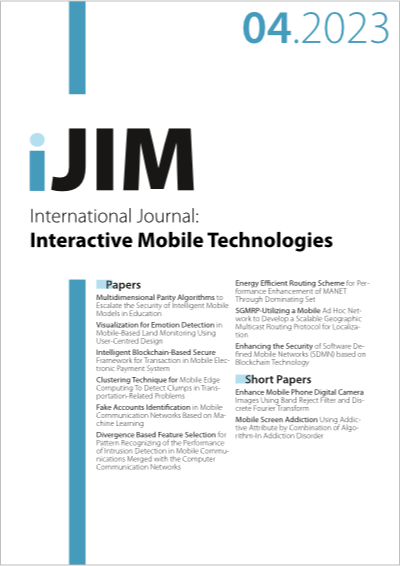Divergence Based Feature Selection for Pattern Recognizing of the Performance of Intrusion Detection in Mobile Communications Merged with the Computer Communication Networks
DOI:
https://doi.org/10.3991/ijim.v17i04.37733Keywords:
Divergence, Feature Selection, C4.5 Classifier, mobile communications, TPR (True Positive Rate), FPR (False positive Rate), Accuracy, stabilityAbstract
The Feature Selection concept is the procedure where in the data is simplified removing the irrelevant features. Divergence method is another strategy of method where in the relation among the attributes and class is measured to understand their contribution to performance. Nowadays the mobile network is integrated with the other networks like the computer networks transmitting all kinds of data leading to attacks in networks known as intrusion in computer networks equally applicable to mobile communications. So in this paper the intrusion detection method involving the other other mode of communication is considered in mobile interaction network. The proposed algorithm performs feature selection using the divergence evaluation method to reduce the feature set. A 10% KDDCUP99 data set was used for the evaluation of the proposed algorithm, and performance metrics were evaluated using the C4.5 classifier. The metrics TPR, FPR and consistency were compared with the mutual information based DMIFSA, RMIFSA, MMIFSA methods and the proposed method is implemented on Python 3.8 that proved to achieve the high accuracy of 99.94% as compared to other methods and also reduce the redundant features. The consistency in Accuracy is maintained almost from 4 features to 10 features in proposed method as compared to other methods that indicates the stability of the system is achieved.
Downloads
Published
How to Cite
Issue
Section
License
Copyright (c) 2023 N. Chitra, Safinaz. S, K. Bhanu Rekha

This work is licensed under a Creative Commons Attribution 4.0 International License.


